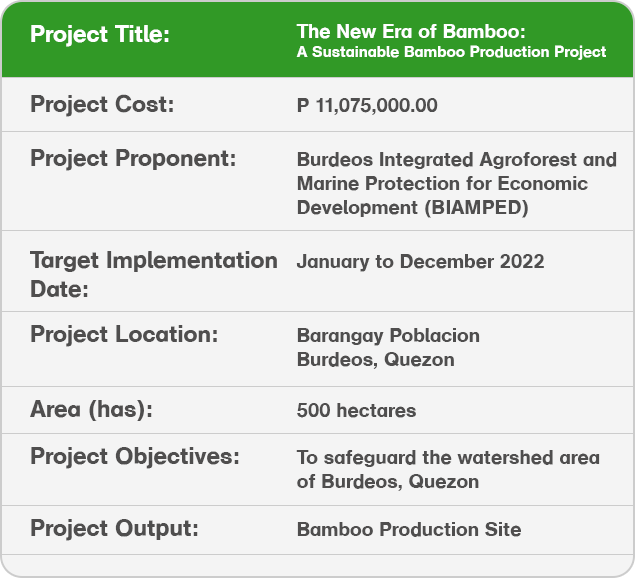



A Sustainable Bamboo Production Project

MODALITIES
Rolling out BIAMPED involves at least six (6) phases:
- Community dynamics
- Survey, mapping and planning
- Nursery establishment
- Seedlings production
- Plantation establishment
- Maintenance and protection
Community dynamics entail social mobilization and capacity-building through a series of meetings and training workshop-seminars to develop the people’s skills and capability to propagate bamboo as a source of livelihood, as a shield to annual typhoons and as a watershed to sustain the source of potable water. They will be introduced to the potentials of bamboo as a highly marketable product.
- The nursery will house all materials and equipment for the production of bamboo propagules including the seedlings. It will also contain a bunkhouse to serve as temporary shelter for the caretakers and or laborers of the project.
- There are several techniques to propagate bamboo, classified according to the type of the propagules. Sexual or reproductive propagation is producing new bamboo propagules coming from the seeds, while asexual propagation method involves the use of vegetative parts of the bamboo is commonly employed for commercial bamboo planting stock production. The third technique called macro-vegetative propagation uses; culms, branches, and rhizomes.
- There are some bamboo species that produce stout, rhizomatous branches that are suitable materials for propagation. It is one that develops from the node. It has a swollen base with four buds, two from each side and resembles a rhizome. It is smaller than culm cuttings that only requires a small pot, less volume of soil and less space. Branch cuttings of kawayan tinik, bayog and giant bamboo are produced on commercially scale.